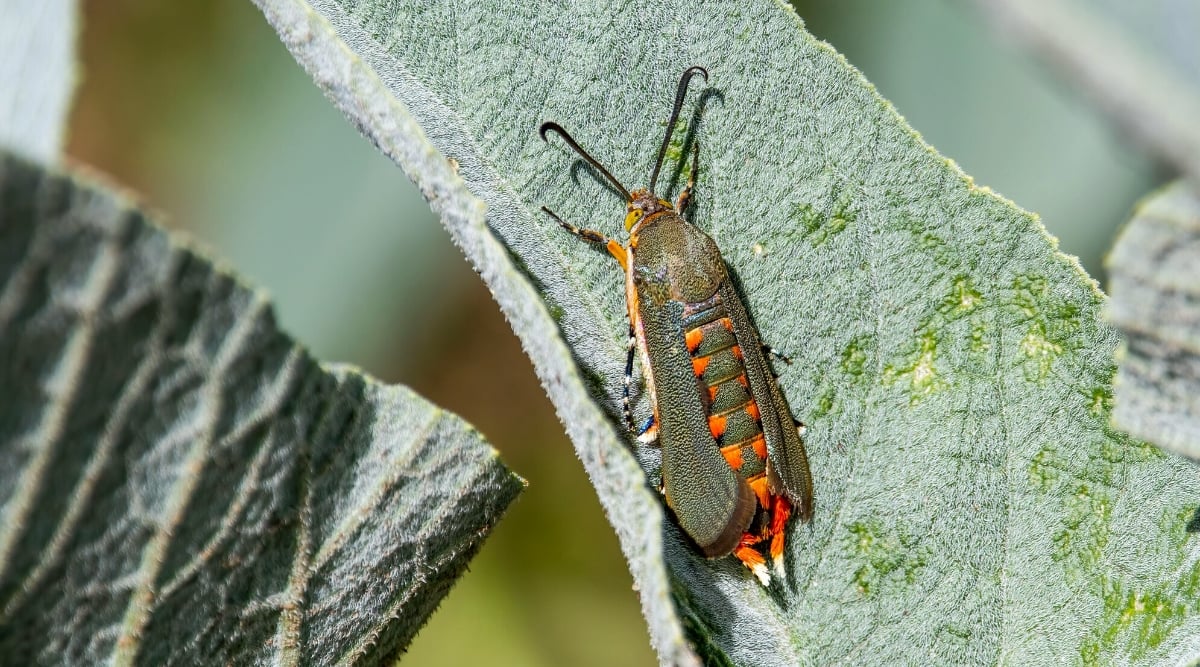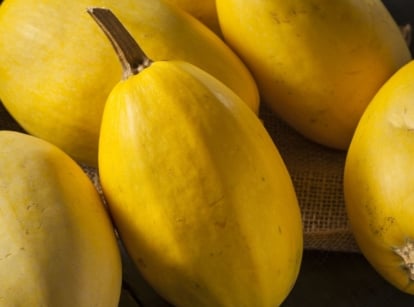Should You Bury Pumpkin Vines?
Growing pumpkins requires lots of space, energy, and patience. You might be wondering how to control the unruly vines and how best to get them the water, nutrients, and stability they need to thrive. Join small-scale farming expert Jenna Rich as she discusses when and why you should bury pumpkin vines and how to do it in your own garden.

Contents
Growing pumpkins to their full maturity takes a lot of time; they’re susceptible to pests and disease throughout the process. Burying roots along the way will encourage new root growth, make them more stable, and increase their access to food and water. Let’s get started.
The Short Answer
The short answer is yes, you should bury your pumpkin vines to increase stability and nutrient uptake and to help your plant survive after squash vine borer infestations.
The Long Answer
We will discuss how burying pumpkin vines will increase stability and nutrient uptake and how this technique can help with squash vine borer damage. First, let’s talk about how it’s done.
Pumpkin Vine and Root Systems

Pumpkins can vine out to 20-30’ during peak maturity, requiring lots of space to spread out. A large leaf surface area allows for more photosynthesis. Root spread allows the plant to uptake more water and nutrients. It takes a lot of energy to grow a pumpkin!
A pumpkin plant has an array of leaves, flowers, and tendrils. Along the main stem, there are many nodes, each featuring a leaf and a delicate tendril. These act as little feet, gripping the ground as the plant grows. Beneath each leaf, there is a possible new root growth site.
Pumpkins have an adventitious root system. When a node is buried, new roots emerge on top of the node. They help secure it to the ground and give it more “straws” to take in water and nutrients from the soil.
There are many different situations in which adventitious roots are formed, including normal growth and various forms of stress. Growers can encourage this process by strategically burying vines by mounding up soil or mud pies on top of nodes.
You may not want new growth above ground at each burial site. This may impede the growth of your pumpkins. If you want the focus to remain on the growing and ripening pumpkins already on the vine, simply snip this growth off, leaving the roots below intact.
Promote new growth

Many growers add mycorrhizae and nitrogen-converting bacteria to promote new growth and encourage your pumpkin plant to grow new roots after you bury the vine. The mycorrhizae is a fungus that assists the roots in efficiently uptaking water and nutrients. The healthy bacteria will boost the available nitrogen for the plant to use for growth.
Together with consistent watering, these additives boost chlorophyll production, enhance root growth, and decrease the overall stress caused to the plant.
Combat Squash Vine Borers

Squash vine borers (SVB) are one of the most damaging pests for cucurbits, including pumpkins. Squash vine borer moths lay their eggs near the base of plants, and when the larvae hatch out, they burrow into stems, feeding on the inside flesh and juices.
The Damage
The moths themselves do not cause any damage to pumpkins, but the larvae can feed for up to six weeks and then burrow into the soil to hibernate, only to return next season. The damage caused cuts off the plant’s water and nutrient supply and will eventually lead to wilt and death.
However, there’s good news. If you suspect squash vine borers have been feasting on your beloved pumpkins, you can take action to save them. Confirm SVB damage and identify larval entrance into the stem. There will be small holes in the stem, caterpillar poop nearby, wilting pumpkin leaves, and a soft or mushy stem.
How to Treat
Locate the larva using a clean, sharp knife and remove it. Remember that the plant may not make it after this removal, and this method is most effective if caught very early.
Alternatively, you can spray Bacillus thuringiensis (Bt) topically. Bt damages the gut of caterpillars, leading to eventual death. Cover each leaf and all stem surfaces thoroughly early in the morning or late in the evening out of direct sunlight. You’ll need to reapply after rainfall and about a week later.
You can inject about 1cc of Bt directly into the pumpkin vine using a garden syringe or medical needle. This will kill any larva that comes into contact with and ingests the Bt. This should be repeated every seven to ten days to keep the infestation down and to prevent newly hatched larvae from causing damage.
Any stem surgery or injection site on your pumpkin vine may leave the plant weak and vulnerable to future disease or simply cause overall frailty. Burying the site, watering it well, and allowing new roots to form underground will strengthen the plant and add much-needed support.
How to Prevent

Unfortunately, there is limited research on SVB because this pest is considered sporadic and affects small-scale gardens differently than large-scale operations. However, there are some things you can try to save your pumpkins:
- Cover young, newly transplanted pumpkin plants and keep them covered until they flower or through the end of June, whichever comes first. This will help prevent the squash vine borer moth from laying eggs on your plants.
- Scout for damage early in the season.
- Spray Bt preventatively by spraying foliage early in the season when larvae hatch.
- Insecticides like pyrethrin and spinosad may also be used as a foliar spray. These nerve and stomach poisons will kill the SVB upon consumption. Be careful when spraying these around other vegetables and flowers in your garden, and follow all instructions and warnings.
- Use Blue Hubbard as a trap crop nearby. Some IPM experts suggest using insecticides on the trap crop only for better control of pests.
Bury Vines for Increased Stability

One major function of a root system is to anchor the plant to the ground, giving it stability against rain, wind, and other environmental activities that may disrupt its balance. Young transplants are especially vulnerable to damage because their roots have not yet been established in the underground world, and their stems are frail.
As roots grow larger and go deeper into the soil, they anchor the above part of the plant, keeping it sturdy. New roots at each vine burial site provide additional support to the plant.
Pro tip: Train your vines where you want them to anchor down for a tidy garden rather than allowing them to vine out into neighboring beds and shading out other crops. You can do this by strategically burying nodes, as discussed. For added help, you can lay bamboo shoots along the path you’d like them to grow. This gives them a roadmap. They can be repositioned as the plants grow.
Controlling your pumpkin vines may seem like messing with nature, but placing them where you’d like them to grow new roots will help keep your garden organized and your plants strong and healthy.
Encourage a Strong Root System

To encourage the development of strong roots, keep the following in mind:
- Maintain well-balanced soil. Imbalanced soil causes growth issues.
- Water steadily and consistently, ideally using drip irrigation.
- Mulch to keep roots from drying out.
- Use a time-released fertilizer based on plant type and soil needs.
Healthy roots should be white, plentiful, and have a sweet, earthy scent. If they smell rotten, the plant is missing something important or is overwatered. Soil testing will help determine what your soil needs.
Increase Nutrient and Water Intake

Roots, which are an underground extension of a plant’s stem, absorb water, minerals, and nutrients from the soil and then transport it up to the plant. A strong root system is crucial to every plant’s survival and is extremely important in plant development and continued growth.
Pumpkins are large vegetables and take a long time to mature. During this time, you must ensure they have the nutrients, minerals, and water needed to produce pumpkins and remain healthy.
When you bury vines along the nodes of your pumpkin vine and new roots form, you provide them an additional avenue through which to transport all these necessities. The less energy your plant can exude searching and transporting water and food from just one entry point, the more energy they can spend doing what they do best: growing pumpkins!
Frequently Asked Questions
Will anything bad happen to my plants if I don’t bury the vines?
Nothing bad will happen, but your plants could reach higher potential growth, health, and yields if you help them put down stronger, more frequent roots as they grow.
Are the soil additives required?
No, but root and growth enhancements will help speed up the process.
Will my plants die if I cut into them?
It can seem scary to slice into your pumpkin vine, and it may be too late to save it, especially if you cut too deep or the infestation is too great. However, by following the rule of early scouting and detecting, using organic sprays and insect netting, and burying the damaged area of the vines, you will give your plant its best shot at survival.
Final Thoughts
If you’ve grown pumpkins in the past and felt like something was missing, try burying the vines for added stability, increased nutrient uptake, and pest damage control. Check out our article on growing epic pumpkins for tips and tricks on growing big, healthy pumpkins and a list of some of our favorite varieties. Happy growing!










